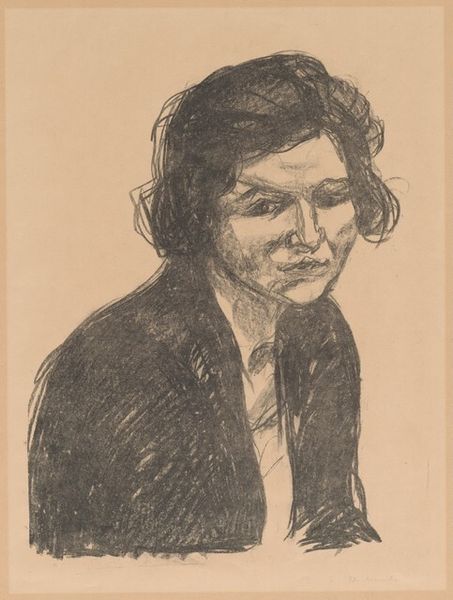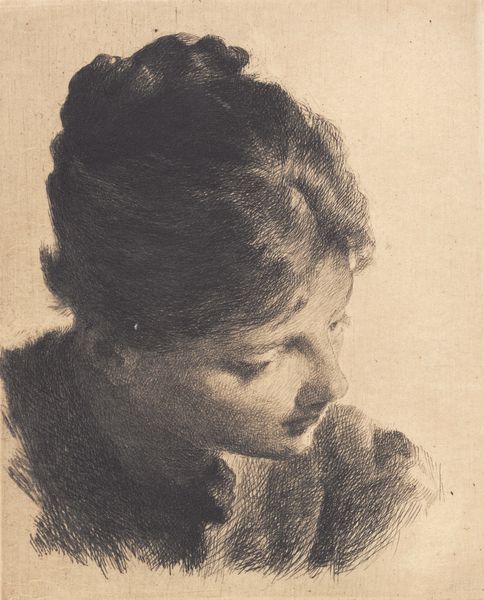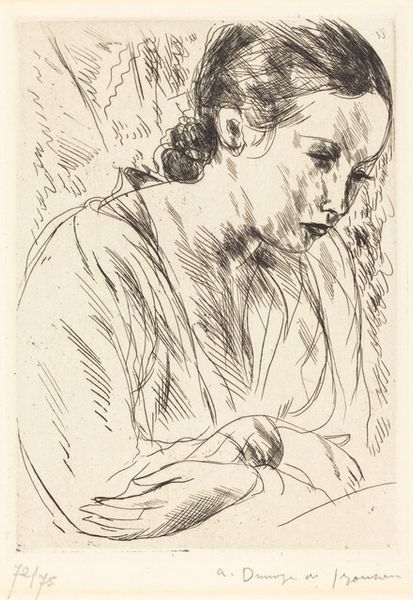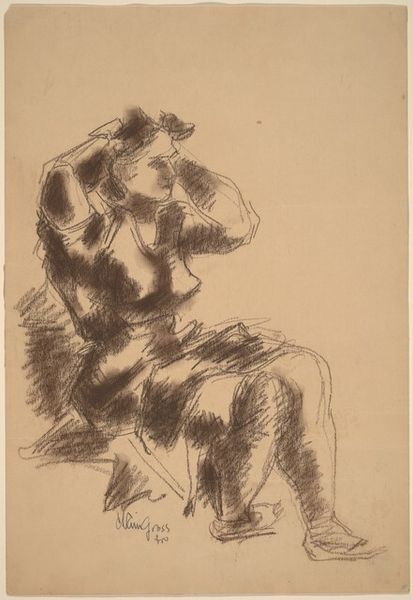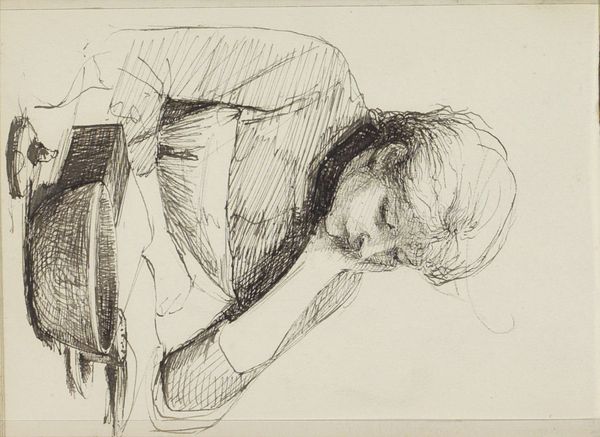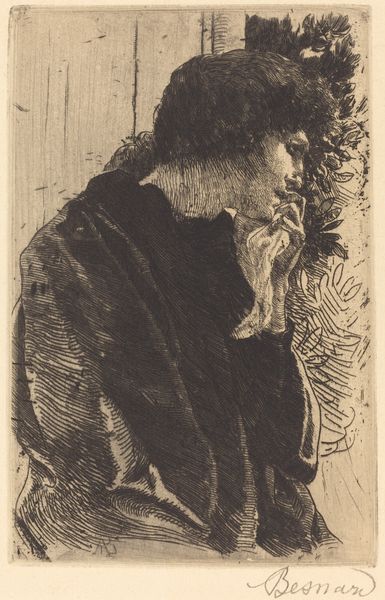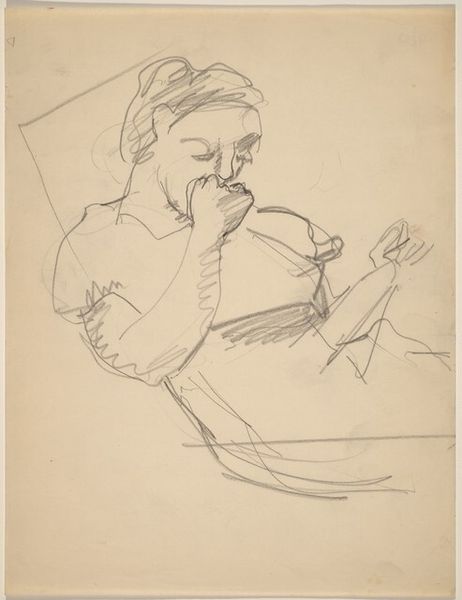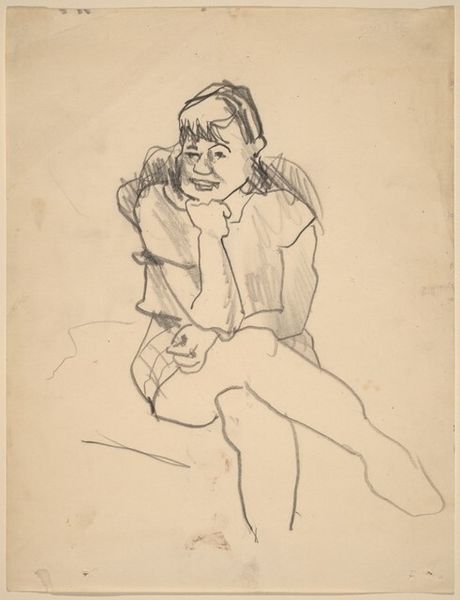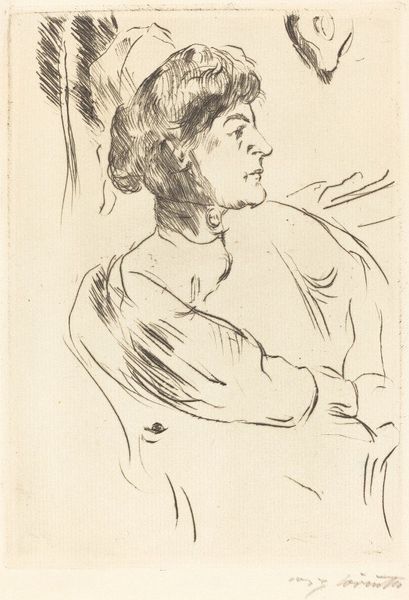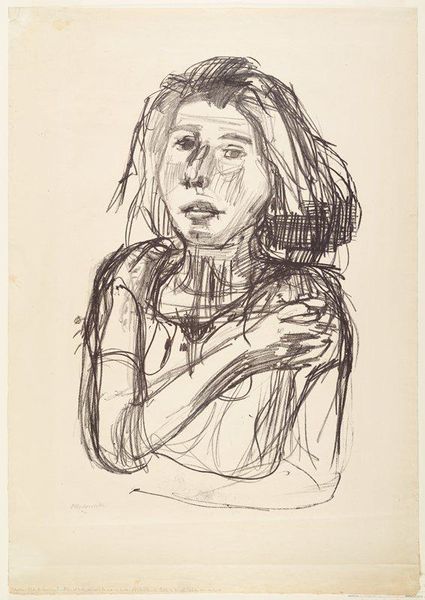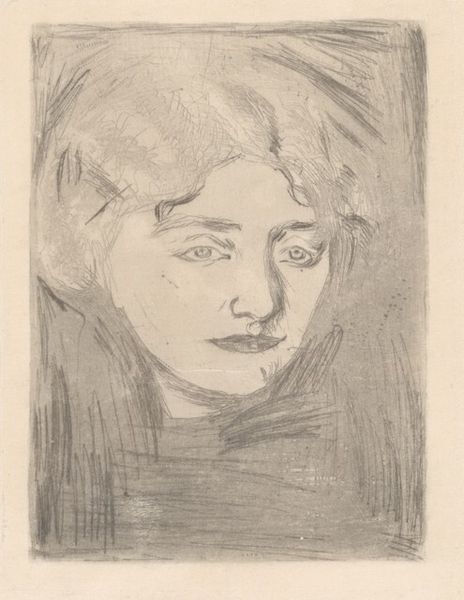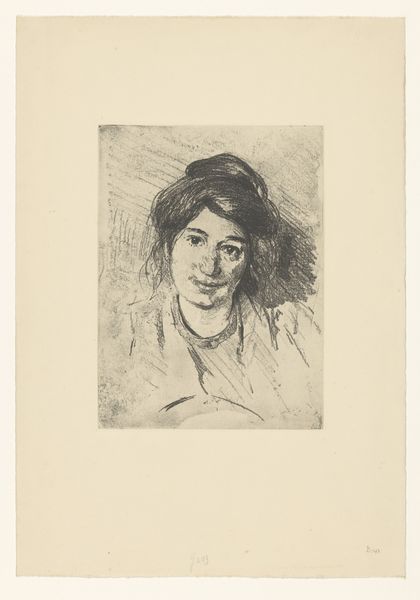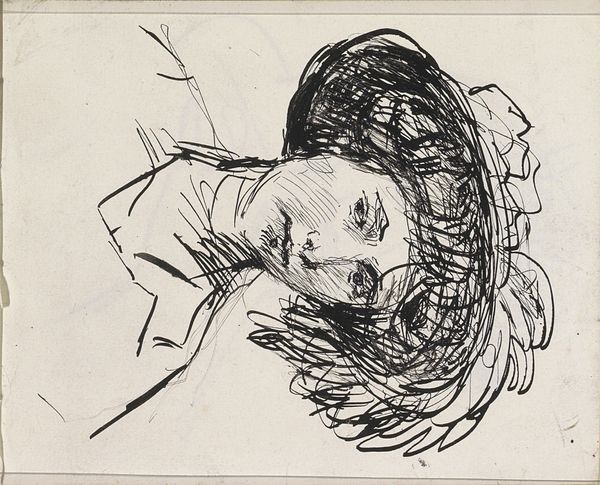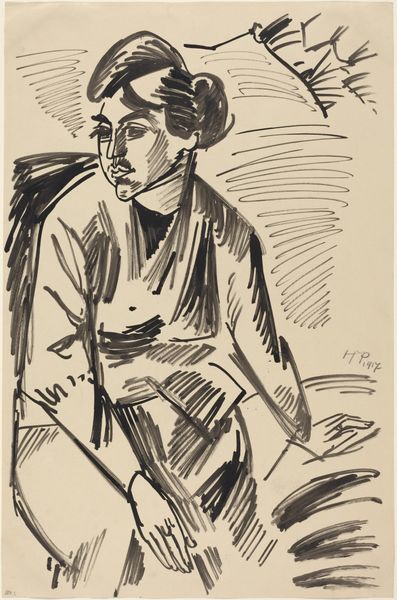
drawing, print, graphite
#
portrait
#
drawing
# print
#
caricature
#
german-expressionism
#
expressionism
#
graphite
#
portrait drawing
#
monochrome
Copyright: Public Domain: Artvee
Editor: Here we have Edvard Munch's "Woman with Hand at her Mouth," created in 1920. It's a graphite drawing and print in monochrome. There's something so raw and melancholic about the figure, she looks to be deep in thought. What do you see in this piece, especially considering the period in which it was created? Curator: The political climate of the 1920s, following the First World War, was riddled with unease, economic crisis and cultural shift. This drawing strikes me as an expression of this societal anxiety filtered through Munch's personal experience. Is the woman silencing herself, perhaps a reflection of the suppression of individual expression during times of conflict and uncertainty? Editor: That’s a really interesting interpretation! It didn’t immediately occur to me. Is there anything specific in the work that makes you lean towards political repression, or is it more about the wider social mood of the time informing how you view it? Curator: It's both. The hand covering the mouth is a strong visual metaphor. But it's impossible to divorce Munch’s work from the broader societal anxieties brewing across Europe in the aftermath of World War I and the rise of authoritarianism. Remember, art doesn't exist in a vacuum. Museums and galleries influence its reception and preservation too. How do we, as curators, perpetuate or challenge these historical readings? Editor: That's so true. I guess I was too focused on the emotions rather than the political forces that influenced them. This has totally reshaped how I understand the piece. Thanks! Curator: Absolutely! It’s a continual process of re-evaluation. Art challenges us to think critically not only about aesthetics but also about history and our own roles in its interpretation.
Comments
No comments
Be the first to comment and join the conversation on the ultimate creative platform.
